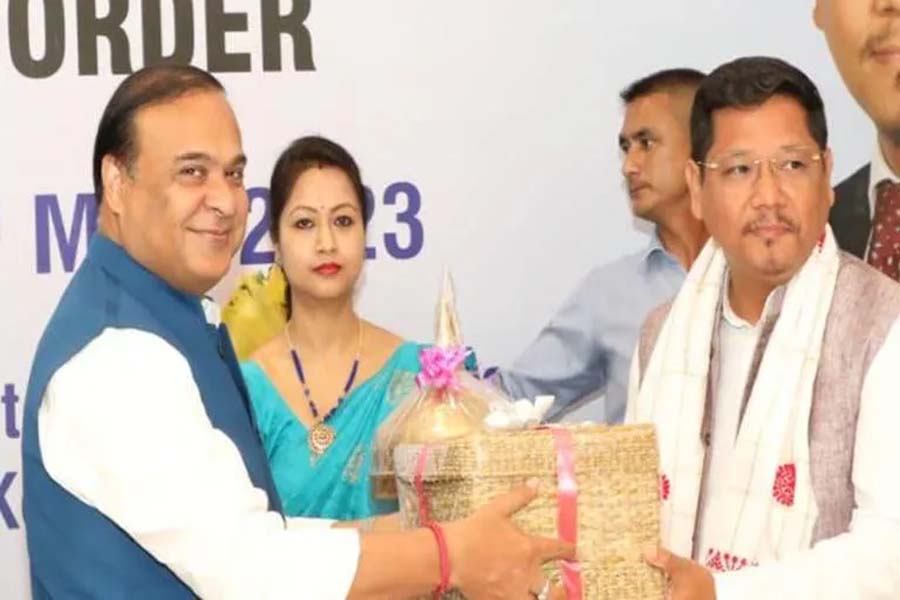Assam Chief Minister Himanta Biswa Sarma along with his Meghalaya counterpart Conrad Sangma held the second round of Assam-Meghalaya border talks on Wednesday in Guwahati. After the talks, Sarma stated that inter-state talk with Sangma is a ‘beginning’ to find out a solution for the six remaining areas under dispute.
While mentioning that another meeting with Sangma will be held in July, Sarma said, “Today, we had a very important meeting. This is the beginning to find out a solution for the six remaining areas. We have asked the regional committees to go through that. We hope to find out a solution soon. We should maintain peace.”
Sarma-Sangma to visit disputed area
Sarma along with his Meghalaya counterpart will visit Karbi Anglong, a disputed area along the borders of Meghalaya and Assam, in June this year for a confidence-building measure. While making the announcement, Sarma said, “We have settled six areas of dispute. The regional committees visited these six areas. In the month of June, we will visit Karbi Anglong and other areas for confidence-building measures. We will be able to resolve the other six disputed areas.”
Assam and Meghalaya on January 29, 2022, signed a draft resolution which was the first step towards resolving a 50-year-old dispute. On March 29 of the same year, Sarma and Sangma signed a historic Memorandum of Understanding (MoU) in the presence of Union Home Minister Amit Shah in Delhi. Out of the 12 disputed areas, the agreement sought the closure of disputes in six areas.
The six, now undisputed, areas are Tarabari, Gizang, Hahim, Boklapara, Khanapara-Pilangkata and Ratacherra under the Kamrup, Kamrup (Metro), and Cachar districts of Assam and the West Khasi Hills, Ri-Bhoi and East Jaintia Hills districts of Meghalaya. The remaining six areas pending to reach a conclusion are blocks 1 and 2 transferred from the then United Khasi and Jaintia districts to Assam’s Karbi Anglong district for administrative convenience in the 1950s.
